Privacy Policy | Terms and Conditions | Disclosure Statement | License Policy
COPYRIGHT © 2024 | NUMBER 8 COOKING | ALL RIGHTS RESERVED.

Privacy Policy | Terms and Conditions | Disclosure Statement | License Policy
COPYRIGHT © 2024 | NUMBER 8 COOKING | ALL RIGHTS RESERVED.

Privacy Policy | Terms and Conditions | Disclosure Statement | License Policy
COPYRIGHT © 2024 | NUMBER 8 COOKING | ALL RIGHTS RESERVED.
Exploring the classification of stocks in cooking is essential to the foundation of many cuisines. Stocks can add structure and complexity to a wide range of dishes.
No matter if you’re making a classic mother sauce or a hearty beef stew. The right stock can bring a dish to life and make all the difference in creating a truly delicious and satisfying meal.
ADVERTISEMENT CONTENT BELOW
We’re going to explore the classification of stocks in cooking. With a particular focus on the role of stocks in creating the perfect mother sauce.
We’ll start by providing an overview of what stocks are and why they’re important. Then jump headfirst into the classification of stocks into categories like white, brown, beef, chicken, fish, and vegetable.
We’ll also explore the characteristics and uses of each type of stock, and provide guidance on how to pair the right stock with each mother sauce.
By the end of this post, you’ll have a deeper understanding of the classification of stocks in cooking. You’ll be equipped with the knowledge to take your culinary adventures to the next level.
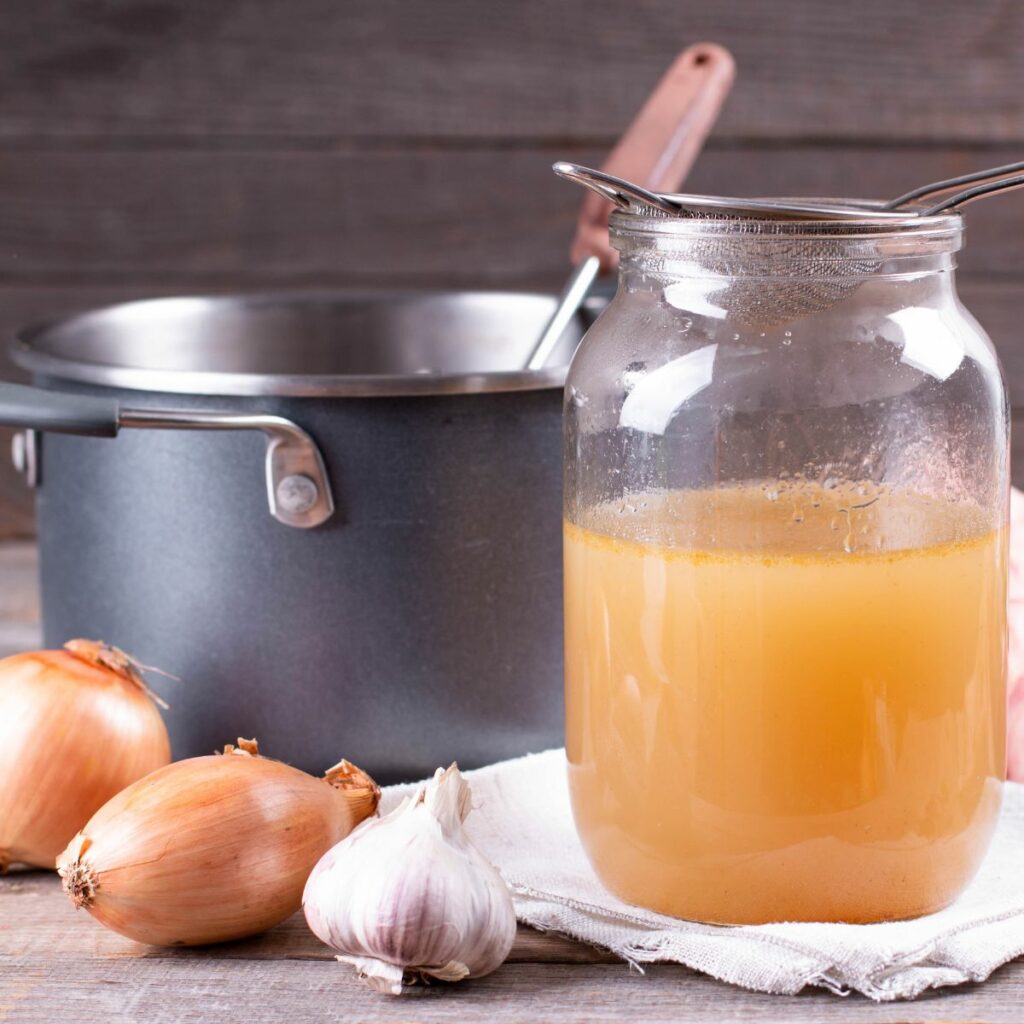
My wife is from South Korea. One evening, she returned home from having dinner with friends, feeling embarrassed.
Her friend had used Oxo stock cubes to make a sauce, and my wife had never seen them before… Curious, she asked her friends what they were. My wife’s friend was in disbelief that she had never seen or used Oxo cubes before.
The thing is I would prefer making my own stocks rather than relying on store-bought options like stock cubes or powders. While convenience is certainly a factor, this can be a blessing and a curse, when it comes to cooking.
ADVERTISEMENT CONTENT BELOW
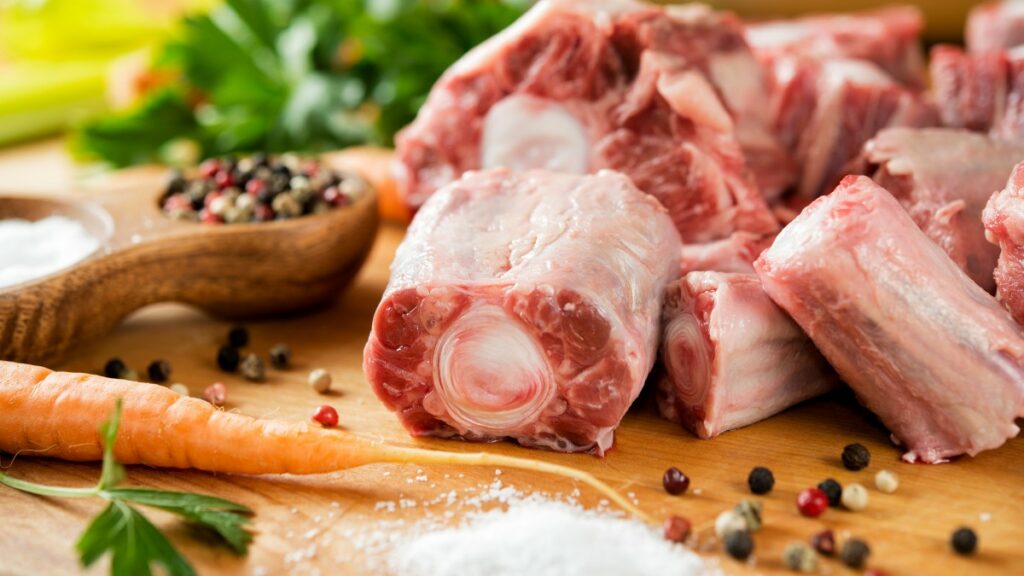
Stocks are a fundamental ingredient in many types of recipes and dishes. Particularly in the creation of soups, stews, casseroles, and of course sauces.
They are a flavorful liquid that is made by simmering bones, vegetables, aromatics, and herbs in water for an extended period of time. Which extracts the rich flavors from the ingredients.
Once the liquid is strained, it can be used as a base for a wide range of dishes. And is particularly useful for adding layers of flavor to soups and sauces.
Classification of stocks in cooking, there are many different types of stocks. Each with its own unique flavors, characteristics, and applications.
Beef and veal bones are commonly used to make rich, hearty brown stocks that are often used in stews, casseroles, and sauce Espagnole.
While chicken bones (frames) can be used to create a lighter, more delicate stock that is ideal for soups, risotto dishes, and sauce Velouté.
Also, fish bones (frames) are used to make light clear fish stock that is perfect for seafood chowders, Paella, and sauce Velouté.
Vegetables like carrots, celery, and onions, (Mirepoix) and even vegetable offcuts. These can also be added to stocks to provide additional flavor.
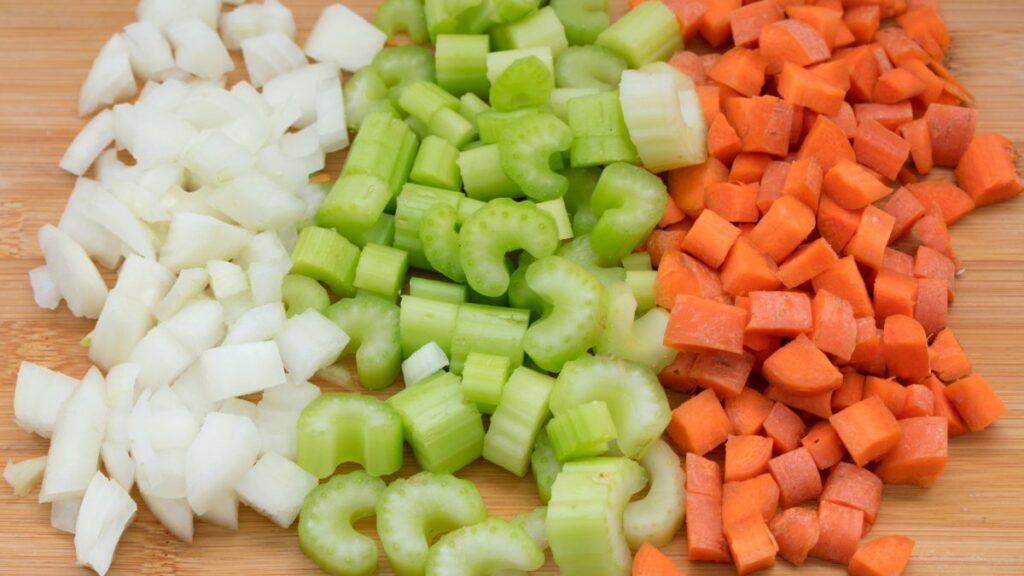
In addition to bones and vegetables, stocks often include aromatic herbs like thyme, bay leaves, rosemary, sage, garlic, and peppercorns. These help to add herbaceous flavors to stocks.
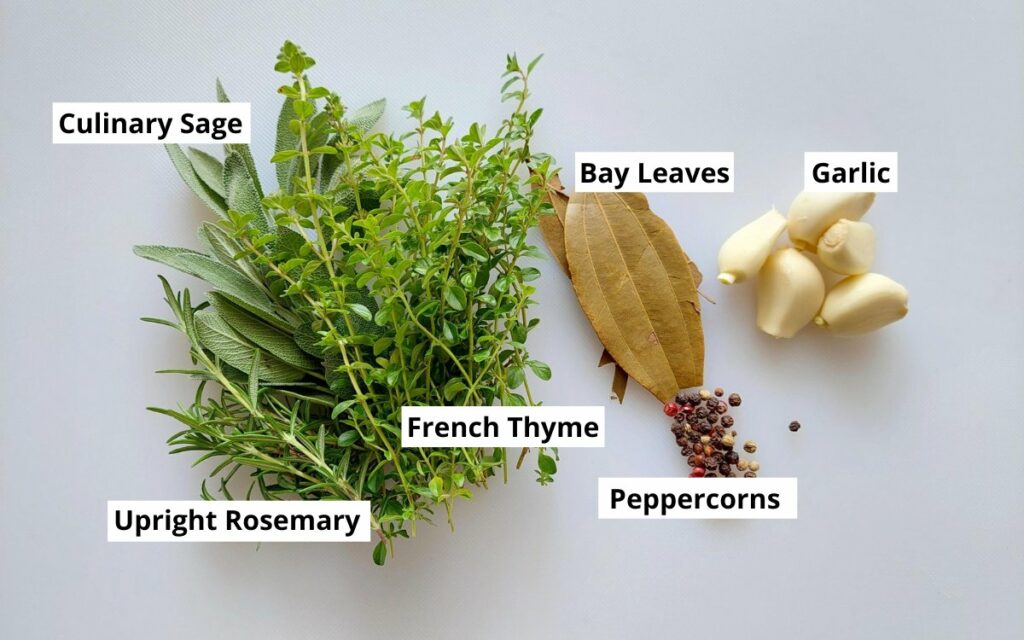
Stocks also could include red or white wine. Also, other ingredients like Star Anise, ginger, and pig trotters (add texture to brown beef stock when reduced).
The use of stocks in cooking can be traced back centuries and is particularly associated with French peasant food. Where it was a way to make a wide range of cheap meals.
Chefs Pro Tip — You don’t need a recipe as such for making stocks. However, work on these quantities. For every 1kg (2.2lb) of bones use about 250g (8.81oz) of vegetables, and enough cold water to cover the ingredients. Add a little more water to account for any evaporation.
Simmering a pot of homemade stock is one of the most rewarding culinary endeavors. Sadly it is a dying art with all the new age stock and jus lie powders available today.
Making homemade stock is an easy way to extract the full flavor from bones, vegetables, and herbs. It is also an excellent way to use up any meat or vegetable offcuts and herb stalks.
Classification of stocks in cooking, there are several different types of stocks I use in cooking. Each with its own unique flavor profile and recommended uses. The common stocks I regularly make are beef, chicken, fish, vegetable, and mushroom.


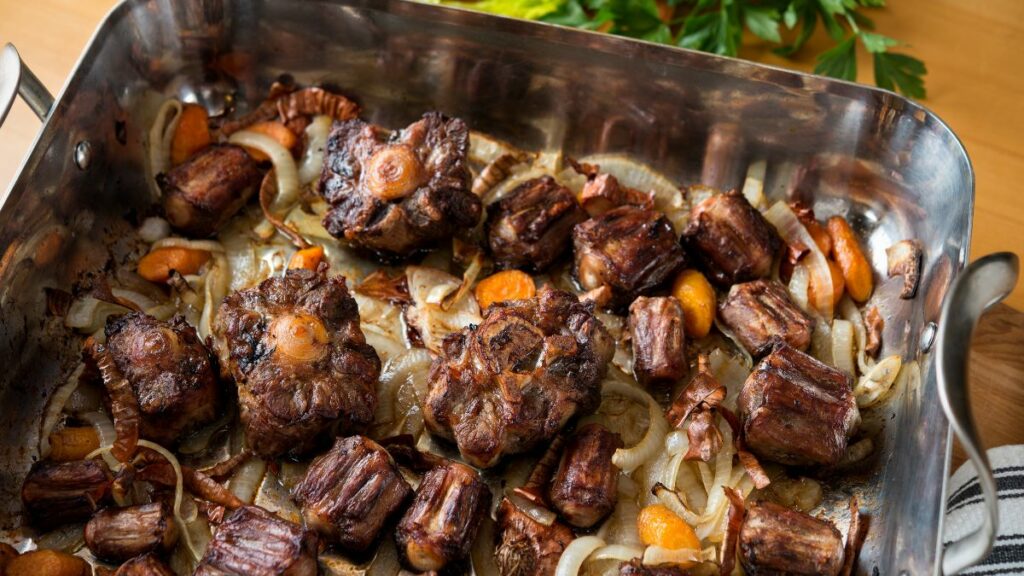
Roasting the beef bone and vegetables will add an intense caramelized flavor and a beautifully rich color to your stock. This will help to incorporate all those wonderful flavors into the dish or sauce you’re going to make.
Add all the ingredients to a large pot including the cold water. Once the beef stock starts to boil add the 2 pig trotters (this is optional) and turn down the heat to a simmer.
Chefs Pro Tip — To help with the removal of any fat or sediment from the top of the stock. Add cold water to the pot. As cold water is denser than hot liquid, it will cause the unwanted substances to rise to the surface, making it easier to skim them off.
Start skimming off any fat or sediment this will help keep the stock clean. Skim every 30 minutes or so.
The beef stock needs to be simmered for at least 8 hours, 10 or 12 hours is preferable. You want to extract as much flavor as possible.
When you’ve simmered your stock for 10 hours. Carefully strain it through a fine sieve or muslin cloth.
Be mindful and try not to agitate the bones too much, you don’t want the stock to become cloudy. Discard the bones and vegetables. You’re starting to understand the classification of stocks in cooking.
Using brown beef stock is one of the fundamental ingredients to making sauce Espagnole. Along with a brown roux, you’ll be making an amazing sauce.
An alternative method to thicken beef stock when clarified and reduced. Add 1 or 2 pig trotters when the stock starts to simmer and leave them in there for the entire simmering time. This will release its collagen and gelatin. This approach eliminates the need to make a brown roux when creating demi glaze.
ADVERTISEMENT CONTENT BELOW

One of the best ways to make chicken stock is to use the whole chicken. This will give you a flavorful stock, and you can have the chicken for your next meal.
Add all the ingredients to a large pot including the cold water. Once the chicken stock starts to boil, turn down the heat to a simmer. Cook for 4-6 hours preferred would be 6 hours.
Frequently skim the surface of the stock as it cooks. This removes any impurities and fat that rise to the top. Which could cloud the stock or give it a greasy texture.
When it is finished (about 4 hours later) strain it through a fine sieve and discard the bones and vegetables.
Chefs Pro Tip — If you’re using a whole chicken, carefully remove it, Naturally being cooked for that long the chicken will fall apart.
Remove the skin and the bones add a little of the chicken stock season the chicken add sliced scallions and crushed fresh garlic and you’ve got a great meal.
Using white chicken stock is one of the fundamental ingredients to making sauce Velouté. Along with a blonde roux, you’ll be making an amazing sauce. You’re now well on the way to understanding the classification of stocks in cooking.
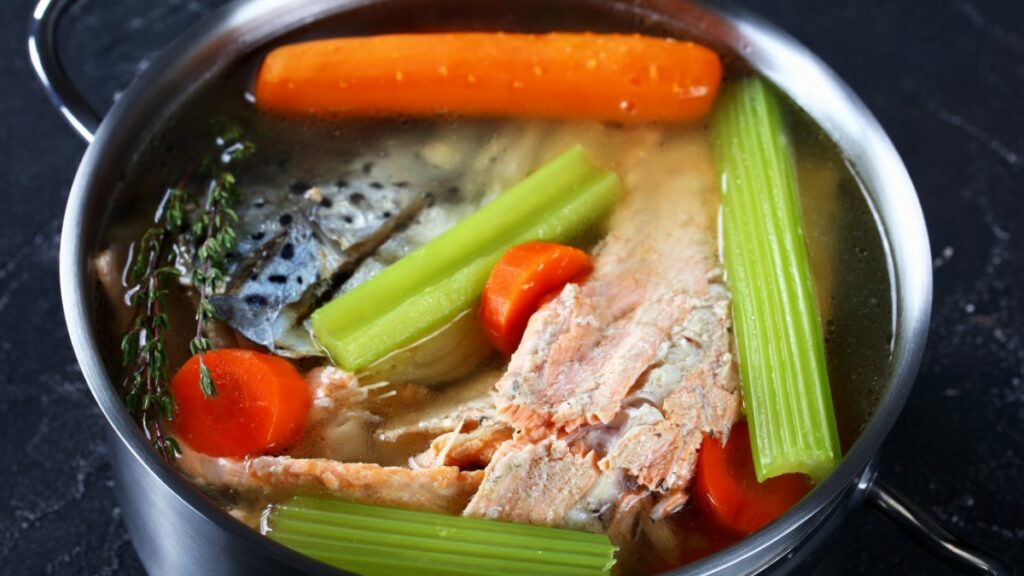
Add all the ingredients to a large pot including the cold water. Once the fish stock starts to boil, turn down the heat to a medium simmer. Cook for 20 minutes.
Fish stock only needs 20 minutes of cooking time to extract that all-important flavor. There are two reasons why.
Chefs Pro Tip — It’s important that fish stock is cooled quickly. You can place the container of hot stock into an ice bath. Then place it into the refrigerator.
This will stop the fish stock from curdling and spoiling. The fish stock should only be kept for 2 or 3 days max.
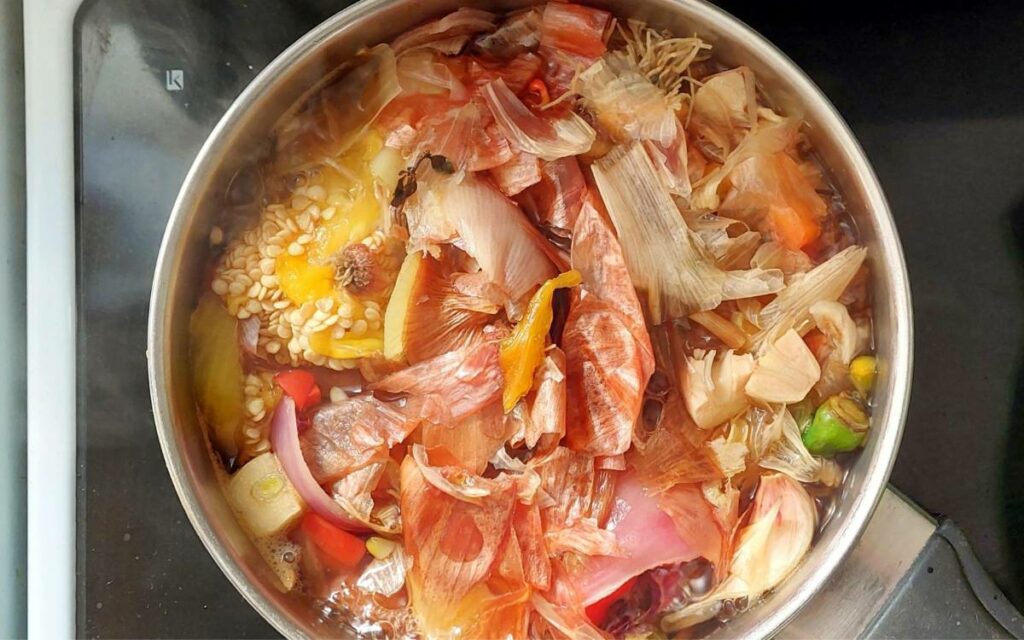
Knowing how to make homemade vegetable stock is easy. This can be a handy skill to have as it can be whipped up in minutes.
Add all the ingredients to a large pot including the cold water. Once the vegetable stock starts to boil, turn down the heat to a medium simmer. Cook for 30 minutes.
Saving all your vegetable offcut, brown onion skins, and herb stalks. Then extract all the flavor out of them by making vegetable stock.
Chefs Pro Tip — Add brown onion skins to the stock giving it a beautiful golden brown color. The onion skins stain the stock, they don’t just add color but flavor as well. So keep your brown onion skins.
Vegetable stock can be used to make gravies with pan dripping and juices. All you need to do is make a white roux and whisk in the vegetable stock.
Then season to taste and simmer for a couple of minutes. Then you’ve got a flavorful gravy for the amazing roast you’ve cooked. You’re on the way to knowing the classification of stocks in cooking.
ADVERTISEMENT CONTENT BELOW
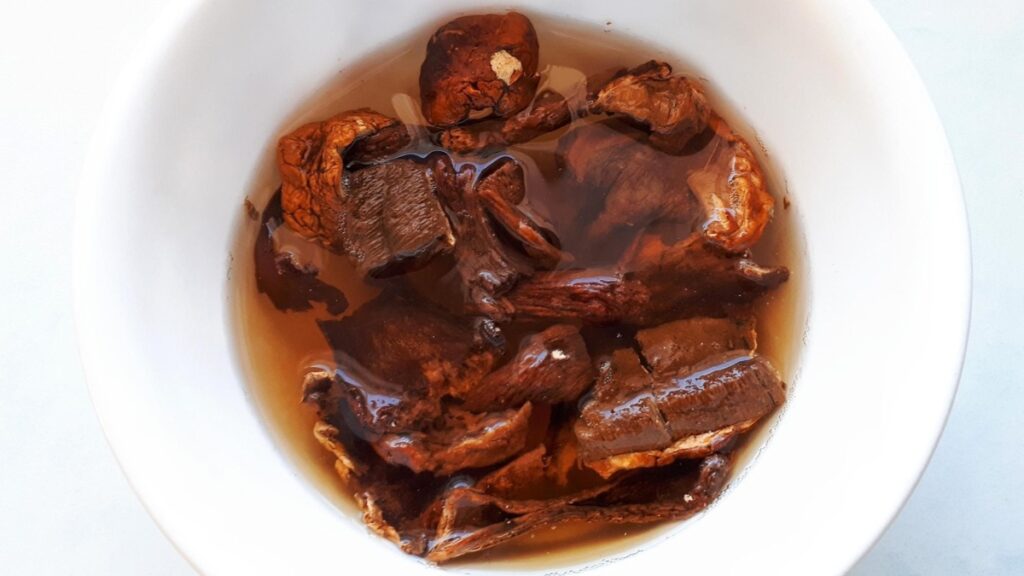
The easiest way to make mushroom stock is to use dried mushrooms. Place them into a heatproof bowl and pour boiling water over them until they’re covered.
Let them stand for 10-15 minutes. Remove the rehydrated mushrooms. Now you’ve got an intensely flavored mushroom stock.
If you don’t have any dried mushrooms. Place mushroom peelings and stalks into a large pot or saucepan. With what you have on hand, ingredients like white wine, reduced by half, garlic cloves, fresh herbs, or peppercorns.
Pour over boiling water and bring to a boil. Turn down the heat to a simmer and cook for 30-40 minutes. Strain through a fine sieve.
Then whisk in the mushroom stock. If you’re using dried rehydrated mushrooms, thinly slice them and add them to the gravy.
Classification of stocks in cooking, and choosing the appropriate stock to complement dishes or mother sauces. This will lay the foundation for achieving the desired taste and texture. So, it’s important to get the stock right, then everything else will fall into place.
For instance, Espagnole (brown sauce) typically uses brown beef or veal stock to enhance its intensity and complexity.
On the other hand, sauce voluté traditionally calls for white chicken or fish stock. This provides a more subtle, delicate flavor without adding too much color.
Also, incorporating vegetable stock into a classic tomato sauce can add another layer of flavor. This is also a great way of thinning out the tomato sauce if it has reduced too much. Remember using a flavored liquid like a stock is way better than using just water.
The quality of the stock you’re using is important. The stock should be free of fat, impurities, or sediment. This will have a direct influence on the finished product.
By thoughtfully selecting the appropriate stock and controlling the quality. Then you can craft a professional mother sauce that is both flavorful and has the perfect texture.
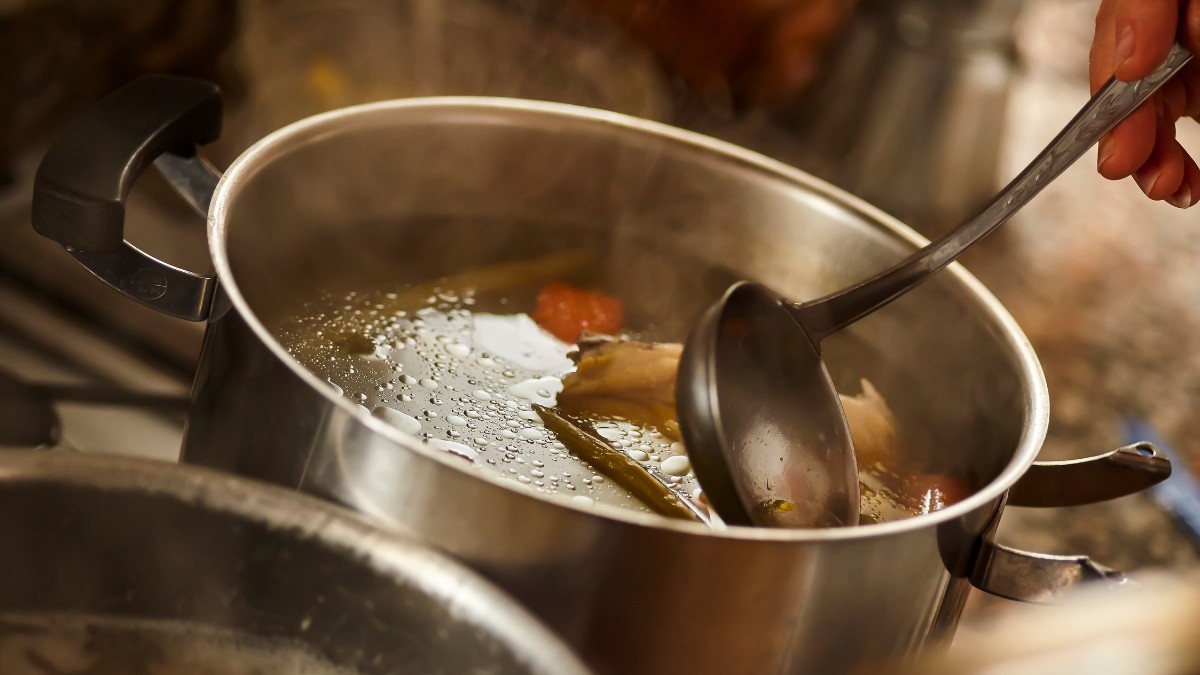
A stock is a flavorful liquid made by simmering bones, meat, vegetables, and herbs in water. Which is then strained and used as a base for sauces, soups, stews, and casseroles.
Stock is simmered for over 6-12 hours to extract as much flavor as possible from the ingredients. Stock is mainly made from beef bones, chicken, or fish frames.
Culinary stocks can also be made from vegetables or mushrooms. Stock can be made from many other ingredients to create your desired flavor.
Stocks are important in cooking because they add depth flavor and richness to dishes. Providing a foundation that other flavors can build upon. Culinary stocks can be used to create any dish from light and delicate consommés and broths to hearty and robust stews and casseroles. Stock is also the flavor base for all sauces and gravies. They are the foundation of cooking where the flavor begins.
The most common types of stocks used in cooking are beef, chicken, fish, vegetable, and mushroom stocks. These cover a wide range of dishes from protein to vegetable-based dishes.
Making a good stock requires patience and attention to detail. Also, knowledge of ingredients and how to use them. For example, try not to use fish heads in fish stock as the eyes will dissolve and cloud the stock.
Or always keep beef stock at a low simmer and try not to boil it. Boiling beef stock will agitate the bone marrow and make the stock a milky white color. Culinary stocks bring dishes to life through a flavorful sauce or a flavor base for your casserole, stew, or soup.
Taking some time to familiarize yourself with the classification of stocks in cooking will only add to your cooking repertoire. Firstly, don’t forget to bookmark this page for future reference.
Stocks play a crucial role in creating flavorful and complex dishes, especially in the case of mother sauces and their derivatives.
They offer a professional touch to your cooking and act as a foundation for other flavors to build upon.
To truly elevate your cooking, it’s important to understand the classification of stocks in cooking and their respective uses.
So, take the time to experiment with different types of stocks and create unique and delicious dishes.
With a little knowledge and knowing the classification of stocks in cooking, you can start experimenting, to take your stock-making skills to new heights.